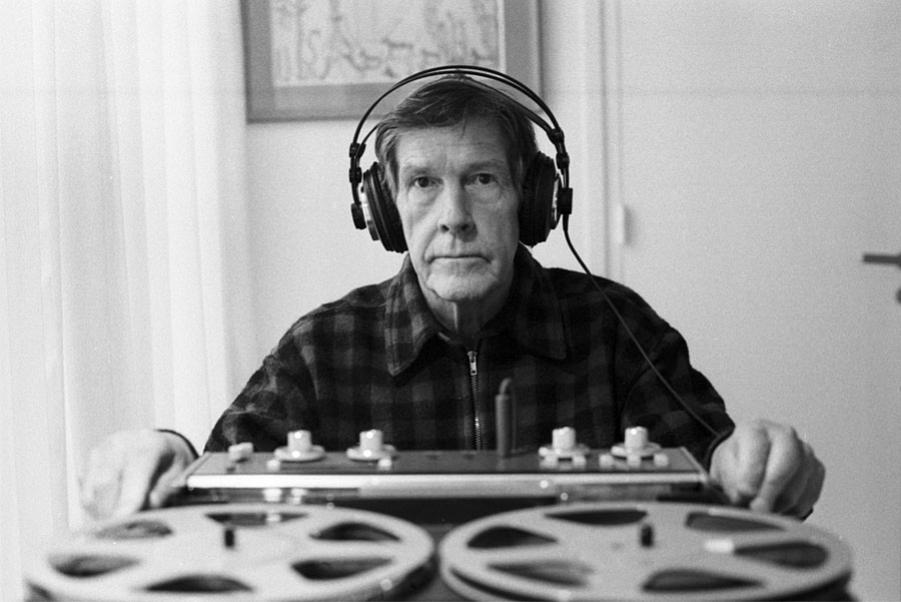 |
| Spend long enough editing audio and you'll have the same blank stare John Cage has here. |
After the Labor Day holiday, and before we begin our workshop rounds in earnest, I thought it would be worthwhile to spend a little time going over the basics of audio editing. In particular, we'll be discussing the very powerful freeware editing software Audacity (which you can download here; you'll also need to download the LAME encoder here to be able to process MP3 files), though you can use any other method or program for editing audio that you're comfortable with. This will hopefully give you enough of a foundation to start playing around on your own in preparation for later workshop projects that will either use the recording medium as a compositional tool, or produce audio works as their final products. You'll note that the first few prompts are writing based, so you'll have more time to get familiar with Audacity before you actually need to use it.
As part of your audio experimentation, you might want to use some of Audacity's built-in effects, and I encourage you to play around with them. You'll find Wikipedia pages for various effects here and more detailed descriptions of some of the basic types of effects you'll encounter here. Another helpful resource is Audacity's own tips wiki, and of course, you can and should also feel free to use our Facebook group to troubleshoot any obstacles you face.
I've been editing audio and recording digitally for more than eight years now (through Adobe Audition, Audacity and Apple's Garageband), and before that spent many years working on 4-track recorders and regular tape decks. Programs like Audacity are relatively user-friendly, but that doesn't mean you won't run into difficulties along the way, especially if you've never worked with audio before. A few general pointers before you get started:
- The best way to learn is through trial and error. You will make mistakes, accidentally erase tracks, and maybe even lose projects, and it's better to do that this weekend than a few hours before the midterm project's due.
- Always be sure to save backup copies of your recordings, work with safety copies, and export new mixes as new versions rather than overwriting your originals. Copy rather than cut, and open a new project or window if necessary. Redundancy is key here, but don't forget that you can always download a new copy of online recordings (from the sources below or your SoundCloud account) if needed.
- Thoroughly document your efforts: use descriptive file names and keep a log of the various steps you take while manipulating your audio, including settings for effects, filters, etc. This will make it easier to recreate processes if you want to apply them to multiple samples or to start over when needed.
- Undo (ctrl/command+Z) is your best friend. If you screw something up (and you will), it's better to undo it and try again rather than take further steps to try to fix it.
- Wear headphones while working and remember that you have the whole stereo field to work with. You can go a long way towards making cleaner, uncluttered recordings if you aim for dynamic range and balance: pan two voice tracks left and right for separation, keep higher and lower frequency sounds apart for greater definition, give quiet sounds room to breathe away from louder signals.
- Try to have fun with the process and remember that nobody expects perfection.
Finally, here are some sources for audio that might be useful over the course of the semester:

No comments:
Post a Comment